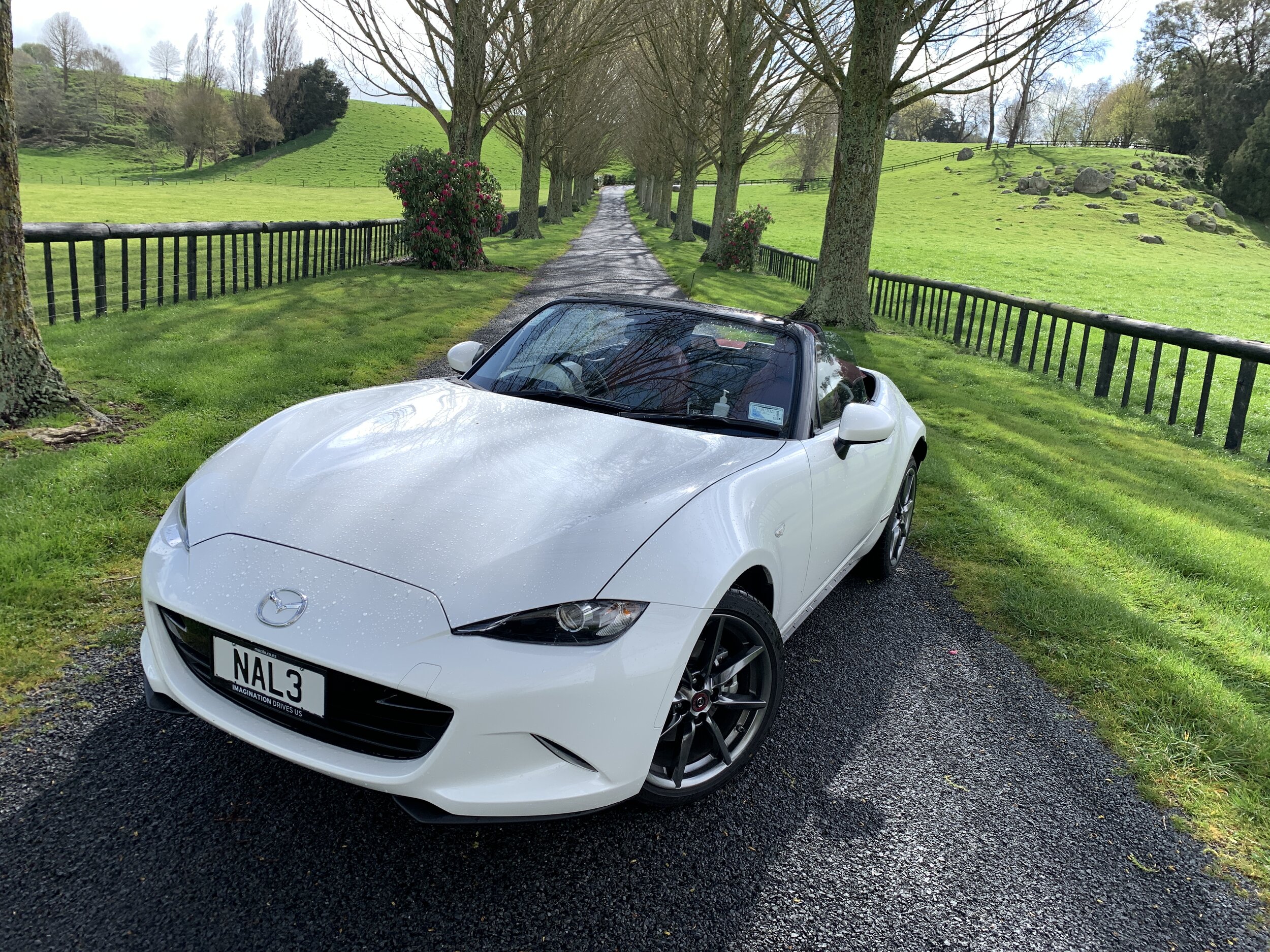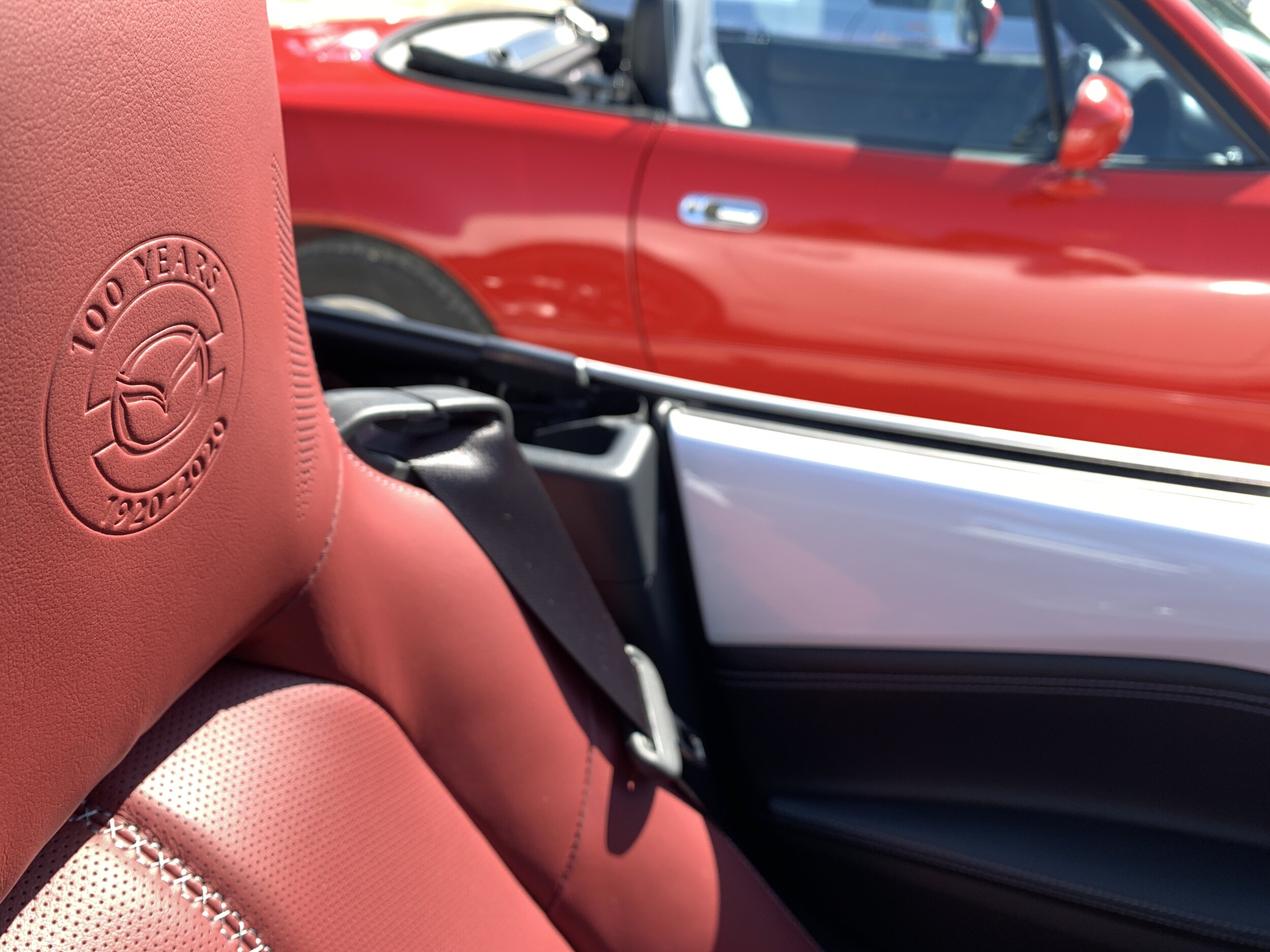Mazda MX-5 100th Anniversary: Birthday treat takes the cake
/The company that started out as a cork producer has just produced a corker version of their best car.
the start of a grand adventure.
Price: $51,095.
Powertrain and performance: 2.0-litre petrol four, 135kW/205Nm, 6-speed manual, RWD, Combined economy 6.8 litres per 100km.
Vital statistics: 3915mm long, 1235mm high, 2310mm wheelbase, luggage capacity 127 litres, 17-inch alloys.
We like: The whole vibe; looks smart.
We don't like: Not owning one.
PERHAPS you’re a founding member of the national cork appreciation society, but I’m guessing not. Just as I’m certain that organisation doesn’t even exist.
Even so, the car here today can be called a celebration of cork’s contribution to the world. And, indirectly, car-making; in that it’s this material that was the making of a car company.
And, in celebration of that having occurred 100 years on, it’s the reason why I’m driving the first example in New Zealand of car that holds a special place in enthusiasts’ hearts.
It’s a little-known fact that Mazda is thought to be the world’s only vehicle maker that began life as a cork producer.
With cork trees abundant in the region around Hiroshima and the local shipbuilding industry in full swing, sourcing cork from these trees, initially for use in wooden ships, ultimately for many other purposes, was an obvious business to pursue. Toyo Cork Kogyo started up in 1920 and grew fast.
Business prior to World War II was good. Technologies in plastics and rubber had not been developed as far as they are today, so cork was an alternative material for all sorts of uses back then, from gaskets and walls. After 1945, however, production of rubber and plastics on an industrial scale meant cork gradually took a back seat as a large-scale industrial material. From thereon, cork was no longer so buoyant.
no cork was used in the making of this car.
Fortunately, Mazda’s founder, Jujiro Matsuda, had a Plan B, that was already proving its worth well before the boom went bust.
He’d been with Toyo Cork Kogyo since 1927, joining after a successful career in engineering in Osaka, where - having started as an apprentice blacksmith - he progressed to forming his own metal casting company. He came on as a board member, rose to be president.
Although, his expertise was in machinery and engineering, Matsuda-san quickly proved his worth with innovations including the production of pressed cork boards, then subsequently insulation and cushioning materials.
Some of these would prove useful in vehicles, which tied in nicely to his aspiration. As early as 1927 he’d determined to lead the company into machinery manufacturing, which ultimately led to the production of three-wheeled trucks, building the basis of the Mazda we know now.
To present day. This being Mazda’s 100th year in business gives obvious marketing opportunity. Conjure up a 100th Anniversary Special Edition trim, that’ll feature in – you guessed it – 100 cars coming to this country.
Speaking as a total MX-5 tragic – yes, best to admit now this whole story is tinged with that bias - I’m pleased to say a quarter of that count comprises examples of Mazda’s famous two-seater rear-drive sports model.
I’m even happier to tell you, also, that the subject of this piece is the very first of those, which Mazda NZ plans to keep.
A manual 2.0-litre roadster, it landed just days before the brand gathered media to try out its SkyActiv-X engine technology, and was mine to drive home from Karapiro, where that event concluded, and hold on to for a little while.
the celebration car was hanging out with its muse, the R360 (above) when at Mazda NZ but also met some more direct relatives at its temporary home.
I couldn’t believe my luck. I’d seen the car at Mazda NZ headquarters and knew it was tagging along as we tried out the SkyActiv-X Mazda3 and CX-30, but wasn’t really sure about the chances of being able to take it home. Right until the keys were handed over as the group departed the lunch spot; the majority heading back north, me alone heading south.
This next bit will sound cheesy. However, it’s true. The day literally changed at that point … the incredibly heavy rain that had hammered our run all morning stopped. The sun came out.
Okay, only for a couple of hours. Well before I got home it was hammering down and freezing again. But surely a good sign and at least the first bit of the drive was as every great MX-5 run should be: Under blue skies and with the roof down. There’s no better way.
There’s no better car (okay, bias again). Driving long distances in a small open car might sound wearying, and I won’t deny the MX-5 redefines the word ‘snug’ and that there are more refined and comfortable cars in the Mazda line-up. Yet it’s also so communicative and wonderfully involving you really don’t notice the kilometres flying by. Well, I didn’t.
But, then, I’d contend the ND achieves this connect because it so successfully rekindles the essence the original NA (the car we own – actually two of ‘em), moreso than the NB and NC that came between them.
The latter aren’t poor efforts – because, frankly (and, yes, with prejudice), when it comes to MX-5s, you’re always talking levels of greatness rather than flaws - but they did slightly erode the core simple-is-best ethic.
This famous minimalism has returned with the ND and was certainly taken very seriously by the development team. Everything that could possibly be scaled down has been; the stubby gear lever and the teensy seat adjusters being good examples.
This is the first MX-5 in which it’s truly easy to not only neatly fold away the roof in a single arm movement, but also lift it. It feels very enclosed with the top buttoned down, of course, and that condition heightens aware of the paucity of space, including for storage. They’ve done a brilliant job though, invariably, despite best efforts, not all solutions are complete.
A nice photo of the car with Mt Ruapehu in the background? Erm, not today.
The cup holders are a classic example. These are in the only possible location they could be, up high between the seats, but it’s no great spot all the same; you’ll soon learn to stop with hot drinks as it’s too awkward to reach the holders on the move without high risk of spillage.
Also, there isn’t much storage space for anything, really; only a small cubby in the centre console and a shallow tray in front of the gearlever that cannot be trusted to contain a cellphone when you’re pushing on. But this isn’t a gripe. More like a ‘same as it’s always been’ acceptance. You just get on and live with it.
Checking out, at a MX-5 owner event a few days on, the celebration car against regular-issue NDs confirmed the special is wholly a styling exercise, with no monkeying around with the mechanicals. So no power play or even a more musical exhaust.
Disappointed? As much as the short-lived Abarth 124 proved extra pep and parp certainly does this car no harm, I’m not unhappy with the ND’s power output.
The 2.0-litre has been meted more power and a broader torque span in its latest format, but it’s more set to squeal those Michelin Pilot tyres than smoke ‘em.
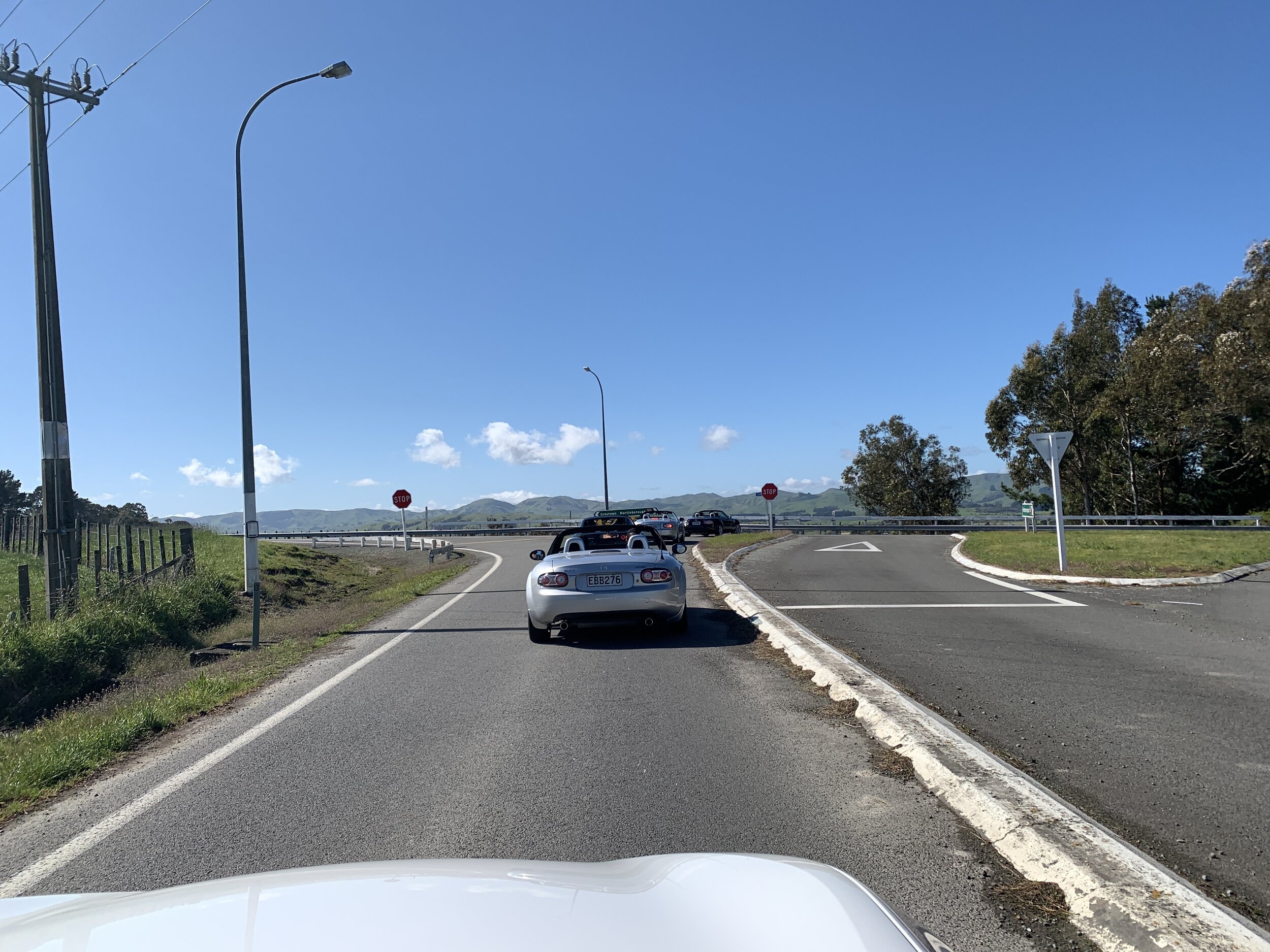

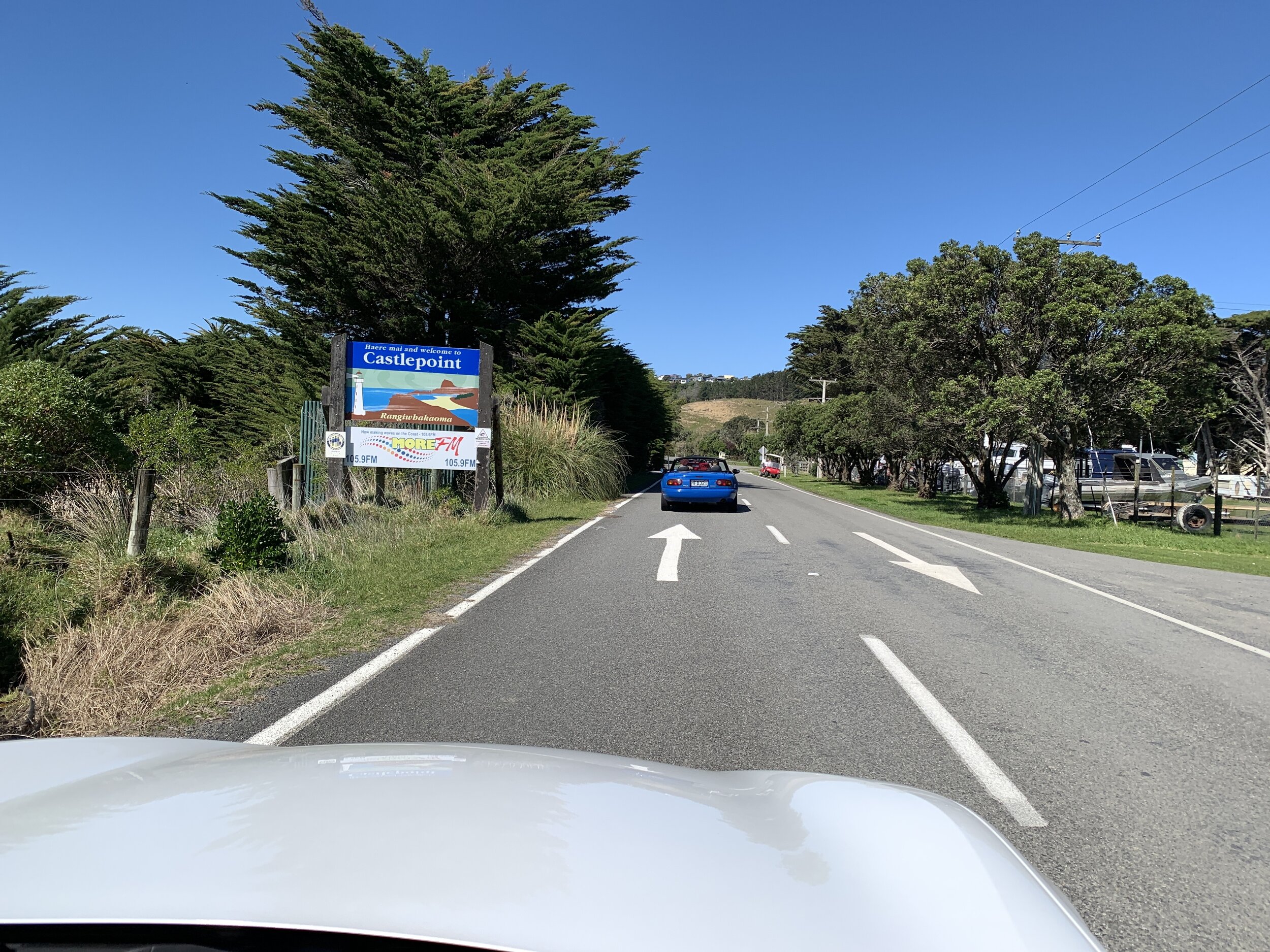

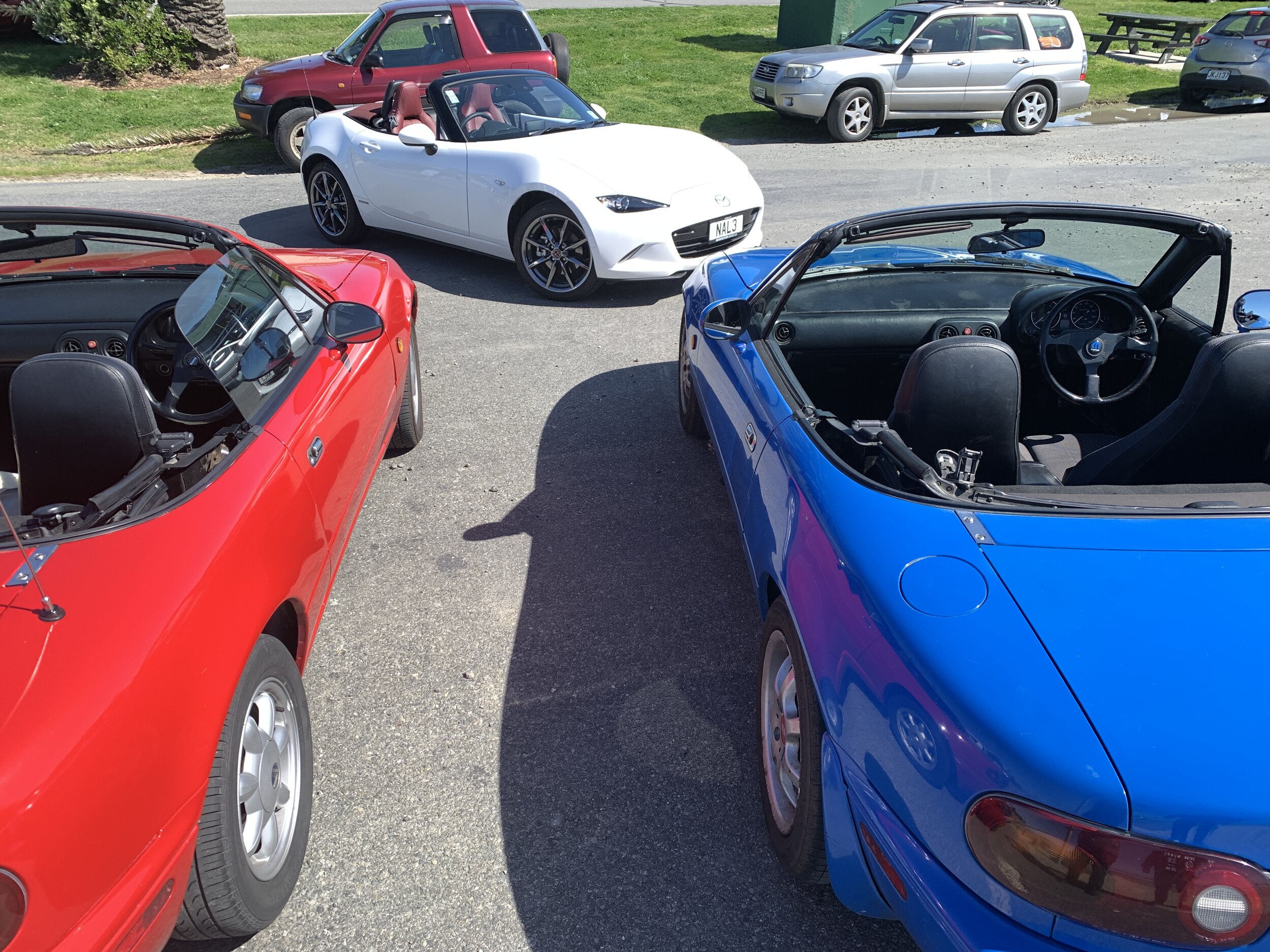
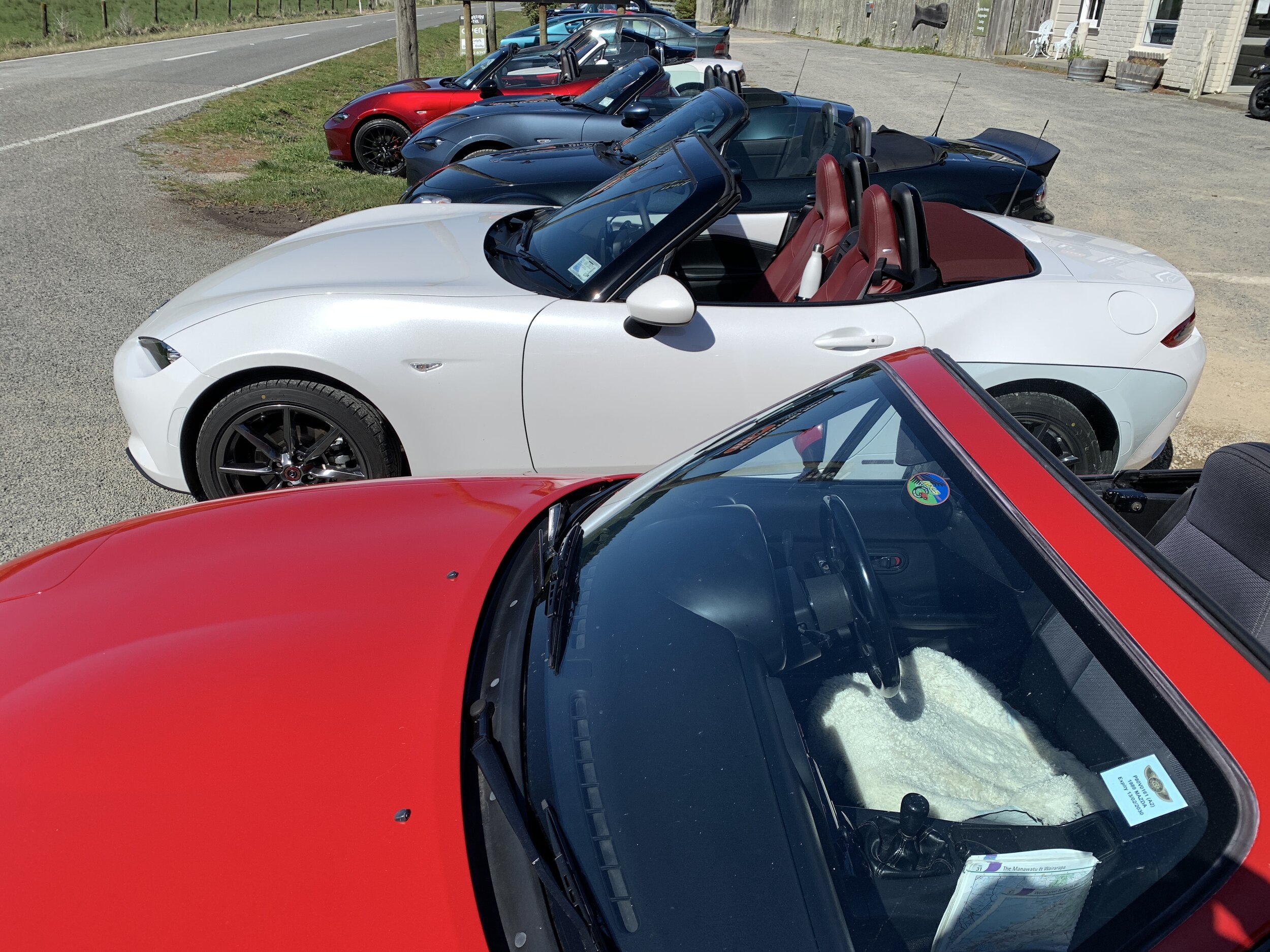
That’s fine. The car’s always been more about briskness than absolute kapow and one of the treats of this package is that it is so tightly dimensioned and well-sorted, chassis-wise, as to carry really good speed through curves with total confidence. Also, it’s so light. The ND goes back to the original NA prescription in weighing comfortably less than a tonne, remember. More bark would be cool, though. It’s a shame Mazda doesn’t seem to shop with Akrapovic.
Where it obvious gets loud is with the anniversary colour scheme. I’ve reservations about how well a body literally in white – sorry, Snowflake White Pearl Mica - and a red roof will work on more substantial, solid-roofed Mazdas, however the scheme really pops on the roadster, especially when the top’s dropped.
Sure, When Mazda cites a cabin ‘accented’ by burgundy styling features, they really mean ‘overwhelmed’, cos little isn’t in that hue. It sounds like a blood bath – or, indeed, a bath coated in blood. But in the light of day – and that’s the best time – it’s not too bad, because only the carpets are crimson. The beautifully-finished leather seats have an orangish tinge that’s less galling.
Badges? Of course there are badges, but they’re generally overt. A wee “100 Years 1920 – 2020” emblem on the front wheelarch replicates on the carpets and the wheel centre caps have logoes in red and black. The biggest signature is embossed on the headrests. The key fob is also embossed and comes in a special edition box, held by Mazda NZ. Likely as not it’s in managing director David Hodge’s office desk, given this is going to be his personal drive car for a while.
Anyway, the look has a throwback vibe to it that’s wholly valid; not a throwback to anything from the cork industry, of course, but the brand’s first passenger car, the R360 Coupe. This came along in 1960 – so, quite a bit younger than the brand - but has arguably now become one of the coolest historic Mazdas ever made.
That nod to heritage works particularly well with the MX-5, because even though the original is very much a city runabout and not very sporty, they are at least both tiny, light two-seaters with a huge dollop of loveable character.
The R360 was never sold here, but incredibly there is one here in private ownership and, impressively, Mazda NZ had it at their premises, parked alongside the MX-5, on the day we were together. It’s a great looking bauble, but not one I’d elect to drive for any distance beyond a quick flit around the block. Truth be told, someone of my height and bulk probably wouldn’t fit into it.
When driving to Castlepoint, take moment to pay homage at Tinui, birthplace of Anzac Day.
Anyway, all in all there’s plenty about the MX-5 to signal it’s special … and honestly, when I took it on a big outing with a bunch of other MX-5ers a few days later, I thought it would be a drawcard that required no explanation. And yet … well, actually, it wasn’t and it did.
Ironically, the only one who came to check the car out with absolute knowledge about what it represents was the owner of a 1989 NA. I really enjoyed chatting with Stan, an octogenarian teenager who loves cars and wants to keep his absolutely to factory condition and spec, because that’s the ethos he’s rigorously adhered to with the other vintage cars he’s owned. Sorry, vintage? Well, that’s the classification the original MX-5 can now quite validly hold with the national old car movement. He’s got the sticker on his windshield to prove it.
Perhaps any immediate under-appreciation of the Anniversary car’s standing is understandable. Anyone who knows a bit about this evergreen gem will know the lineage of limited-count versions is pretty rich. It’s received so many special treatments over the years that I’m not sure if anyone, Mazda included, can accurately say how many limited editions there have been.
Still, that hasn’t seemed to stop them from selling and being treasured. Anniversary editions have proven to be highly coveted. Being a tragic I can tell you there have been four previously, all in bespoke colours.
They start with a 10th anniversary car based on a 1.8-litre Mk II, launched in 1999 and limited to 7500 units, finished in Innocent Blue Mica and sporting a six-speed gearbox. A 2009 20th, limited to 2000 units and its home market of Japan only, and, in 2014 a 25th, of which just 1000 units worldwide were built in Soul Red Premium. This is the only one to divert from roadster tradition, being instead based on the folding hard-top RC model. Last year came a 30th edition, with an orange paintjob.
Should the ‘100th’ be considered part of that exclusive pack? Conceivably, it doesn’t qualify, because it isn’t model specific, as the others are.
Yet even though the ‘100th pack’ can be configured on eight other current Mazda models, I don’t think the MX-5’s cred is damaged. It looks so especially charming it’s hard to see it being any less collectible or attractive to cognoscenti. On the other hand, I’m equally sure that status only works for the MX-5. Buying a ‘celebration’ CX-9 in hope of it maintaining or even appreciating in value would be a long shot.
It’s nebulous arguing the $1500 premium over the donor Limited MX-5 is worth it because, well, the orders have been and taken and fulfilled. I’d say it was, especially in manual format. That this one features in the promo shots for the campaign and is really well-loaded reinforces it’s the favourite child.
The Limited-spec car is already a cool thing, and the manual has a limited-slip differential. Plus the ND facelift has introduced Apple CarPlay and Android Auto, heated seats (a must-have for cold weather top-down driving) and a Bose audio system, automatic climate control, and 17- inch dark silver aluminium alloy wheels. The one little extra I really grew to like on the celebration car were the driver and passenger headrest speakers; the sound system needs to be cranked when the roof is down, but this little extra allows something I didn’t think was possible – coherent phone conversations on the move. There’s obviously a microphone cunningly installed as well. But, anyway, at 100kmh I found I could make and take calls with no issue at either end.
Embossed seats are artful … and very comfortable.
The initial drive home was a classic adventure. I had the roof down almost until Taupo, but then had to close the car. By then it was late afternoon, it was getting cold and there were dark clouds at the southern end of the lake. Sure enough, the weather absolutely closed in on the Desert Rd – hence why no classic shots of the car with Ruapehu and Ngauruhohe in the background. The dominant natural features were totally hidden.
The outing with other owners was the highlight. Sunday dawned bright and clear and it stayed that way; a perfect condition for a full day’s driving – again solo (Mrs B loves her own MX-5, and enjoys driving, but had other stuff to attend to this day) - from my Manawatu home to Featherston, to then catch up with an enthusiast group on a planned drive out to Castlepoint and return.
It’s a fantastic and classic MX-5 route, quite potentially one of the very best in the lower North Island; packed with the twists and turns and short straights that really bring out the car’s classic character and reminding why weight, or rather the lack of it, is so central to the MX-5 being as good as it is to drive.
I’m not alone in thinking that. MX-5 enthusiast clubs operate throughout the country and are well-supported. I’m indebted to Sharon and Keith Ewing, convenors of the Kapiti register, for allowing me to join in with their monthly run, which with involvers from the Wairarapa and Manawatu chapters drew around three dozen cars onto a cracking route.
It was fantastic to see all generations and formats of the car ducking and diving out to Wairarapa coast and back; some enjoying the outing as a laidback drive, others using it as an occasion to blow out those Covid cobwebs at more energetic pace. For my part, the six-speed box, steering wheel, the tyres and brakes were worked hard enough that, by the end of it all, the car felt quite a bit friskier than it had on pick up.
Mind you, when they handed it over, there was barely 200kms on the clock. When it I handed it back, it was almost about to tip over into its first thousand. So, really, I’d been doing everyone a favour, with a brisk running-in process.
Assuredly, the pleasure was all mine.

